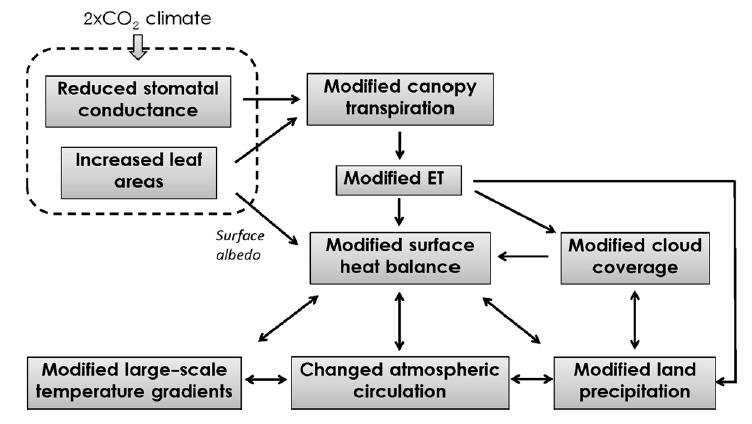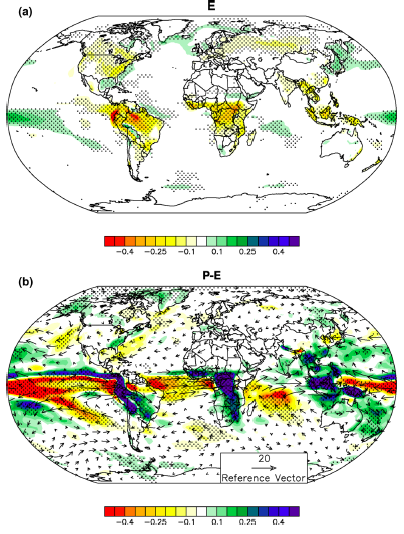Vegetation is a major component of the climate system because of its controls on the energy and water balance over land. This functioning changes because of the physiological response of leaves to increased CO2 . The Community Earth System Model coupled to a slab ocean is used compare these changes with the climate changes from radiative forcing by greenhouse gases.
The consequent reduction of transpiration and net increase of surface radiative heating from reduction in cloudiness increases the temperature over land by a significant fraction of that directly from the radiative warming by CO2 (0.5 degree C, or about 15%) . Large-scale atmospheric circulation adjustments result. In particular, over the tropics, a low-level westerly wind anomaly develops associated with reduced geopotential height over land, enhancing moisture transport and convergence, and precipitation increases over the western Amazon, the Congo basin, South Africa, and Indonesia, while over midlatitudes, land precipitation decreases from reduced evapotranspiration.
On average, land precipitation is enhanced by 0.03 mm per day (about 19 % of the CO2 radiative forcing induced increase). This increase of land precipitation with decreased ET is an apparent negative feedback, i.e., less ET makes more precipitation. Global precipitation is slightly reduced. Runoff increases associated with both the increased land precipitation and reduced evapotranspiration.
Examining the consistency of the variations among ensemble members shows that vegetation feedbacks on precipitation are more robust over the tropics and in mid to high latitudes than over the subtropics where vegetation is sparse and the internal climate variability has a larger influence. (Pu and Dickinson 2012; 2014)

climate system.
